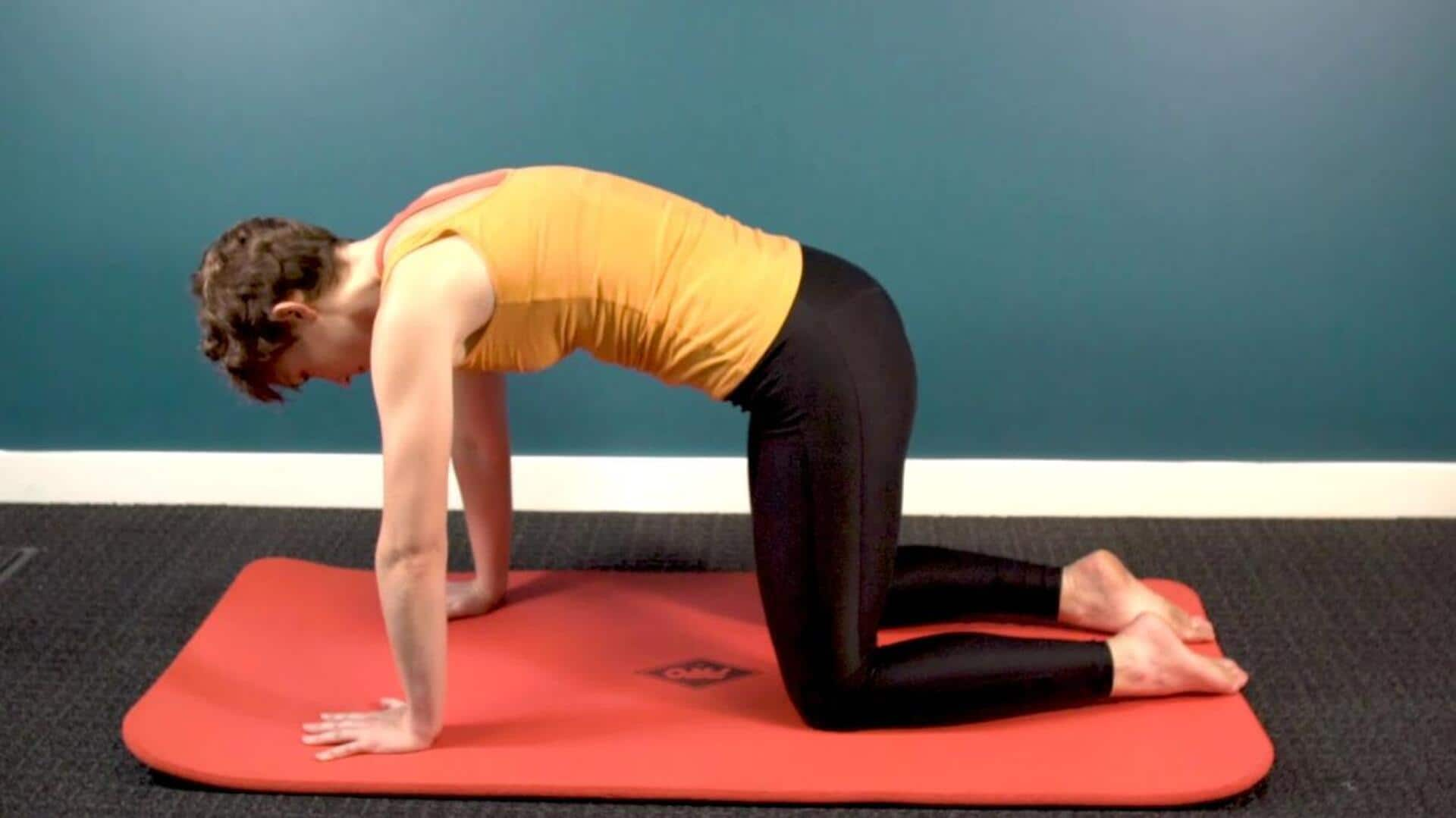
Back day: Do these exercises for a stronger spine
What's the story
If you want to keep your spine healthy and back pain at bay, thoracic mobility is essential. The thoracic area (in the middle of the spine) tends to get stiff after long hours of sitting or bad posture. Improving flexibility here can ensure better movement and lesser pain. Here are five exercises to improve your thoracic mobility and back flexibility, and keep you active.
Drive 1
Cat-cow stretch
The cat-cow stretch is an easy way to warm up the spine and promote flexibility. Start on your hands and knees, with your wrists beneath your shoulders. Inhale as you arch your back, dropping your belly towards the floor while lifting the head (cow position). Exhale as you round your spine towards the ceiling, tucking your chin to your chest (cat position). Repeat the sequence for 10 reps.
Drive 2
Thread the needle
Thread the needle targets the upper back muscles, promoting better thoracic rotation. Start on all fours with knees hip-width apart. Slide one arm underneath the opposite arm while lowering your shoulder to the ground. Hold this position for a few seconds before returning to start. Repeat on each side for eight repetitions.
Drive 3
Seated torso twist
The seated torso twist enhances rotational movement in the thoracic spine. Sit cross-legged maintaining an upright posture. Place one hand behind you on the floor while using the other on opposite knee for leverage as you twist gently towards that side. Hold briefly before switching sides, repeating eight times per side.
Drive 4
Child's pose with side reach
This variation of child's pose stretches both sides of the body while enhancing spinal flexibility. Kneel down, then sit back onto heels, extending arms forward into traditional child's pose position. Walk hands over toward one side, feeling stretch along opposite ribcage area, holding briefly, then switch sides, repeating six times per direction.
Drive 5
Wall angels
Wall angels improve shoulder range of motion, indirectly helping thoracic mobility by engaging upper back muscles effectively against gravity resistance through wall surface contact points during exercise execution itself. This establishes proper alignment thrsoughout the whole movement pattern cycle performed correctly without compensatory actions elsewhere in the kinetic chain system involved. Altogether seamlessly integrated together, harmoniously working synergistically, achieving the desired outcome efficiently in the optimally possible manner achievable.